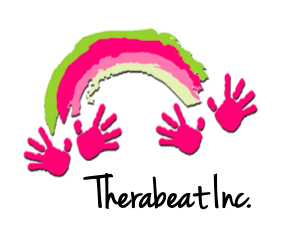May has come to be known as the Month of Mental Health. On May 15 the Mental Health Coalition started a new online campaign using the hashtag “How are you, really?”. Its purpose? To be more transparent about everyday mental health struggles and open up a dialogue about honest and real feelings.
While a large concentration has been on maintaining and supporting children’s mental health during this crisis, acknowledging the strains of caregivers’ and parents’ mental health is equally important, especially if there is a child with special needs involved. The Mental Health Coalition estimates that 1 in every 4 people will experience some type of mental health condition at some point in their lives (The Case for Mental Health, para. 1). With this in mind, knowing how to best give or recommend support to caregivers and parents of children with special needs is crucial.
With school and business closures, online work has been a hallmark of COVID-19. Parents and caregivers have become full-time teachers overnight, therapy facilitators, and entertainers in addition to job responsibilities. Despite the World Health Organization and American Academy of Pediatrics recommendations that children ages 6-10 only receive 1-1.5 hours of screen time a day with that limit increased to 2 hours for children 11-13 (EyePromise, 2019, para. 3 &4), an increased amount of screen time for everyone–children and parents alike– has become inevitable. In a 2018 study, researchers found that an increased amount of screen time in children correlated with lower psychological well-being and less emotional stability, as well as increased anxiety and depression (Twenge, 2018, pg. 272). Additionally, a 2017 study found that the amount of TV watching and computer use can predict the depression level among adults (Madhav et. al, 2017, pg. 68). To combat these effects, Amy Kelly– Devereux Advanced Behavioral Health National Director of Family Engagement– recommends “unplugging” from screens for set periods of time for the entire family (Kelly, para. 10).
Juggling various responsibilities can be overwhelming. Having times dedicated to engaging in realistic self-care practices can help alleviate feelings of anxiety and stress. While yoga and mindful meditation are effective strategies, it can be difficult to block out set amounts of time. Seattle Children’s “Realistic Ways for Parents to Manage Stress” article suggests going on a short walk outside or 5-minute stretching or single-song dance party as a quick self-care practice (Ibarra, 2020, para. 23). Taking 5 deep breaths periodically as well as bringing awareness to water intake and posture are additional easy self-care practices as well (Ibarra, 2020, para. 24 &25).
For those families who desire for self-care practices to be inclusive of all family members, board-certified music therapist Stephanie Leavell’s “Yoga Song” is intentionally written for children and is family-friendly. Stephanie’s song is based on 11 different yoga poses that are easy for beginners and children. During the song, she slowly counts to 10 before transitioning to the next pose. At the end of the song, she focuses on breathing before gently ending. Her song is part of her album “Move It, Move It!” and can be found on Spotify and iTunes music, as well as YouTube (with visuals of the poses). The song can help decrease heart rate, increase oxygen, and encourage mindfulness for all parties participating.
Seattle Children’s also recommends 5 steps for caregivers and parents to take during times of frustration (Take 5 When You’re Overwhelmed or Frustrated, 2020):
Stop and step away
Take a short break to breathe
Remind yourself “I can do this” or “It’s important to stay calm.”
Ask yourself, “How can I handle this situation in a way that I will feel good about?”
If possible, ask for support from a partner or family member. Call or text a friend or neighbor. It’s ok to ask for help.
Per step 5, speech-language pathologist Jim Mancini from Seattle Children’s recommends to “practice physical distancing, not social distancing” (Ibarra, 2020, para. 38). He points out that regularly talking–via phone call, via video chat, or text message– can help all individuals regulate during this time of quarantine and isolation. Affirming feelings and checking in by asking “How are you, really?” can let others know that they are not alone.
-Sarah Deal, Music Therapy Intern
References:
Eyepromise (2019). Screen Time Guidelines by Age. Retrieved May 16, 2020 from https://www.eyepromise.com/wp-content/uploads/2019/05/Screentime-Recommendation-Chart-Final_AAP-WHO.pdf
Ibarra, R. (2020). Don’t Have an Hour for Yoga? Realistic Ways for Parents to Manage Stress. Retrieved May 16, 2020 from https://pulse.seattlechildrens.org/dont-have-an-hour-for-yoga-realistic-ways-for-parents-to-manage-stress/
Kelly, A. (2020). COVID-19: Helping families with special needs during a public health crisis. Retrieved May 16, 2020 from https://www.devereux.org/site/SPageServer/?pagename=helping_families
Madhav, K. C., Sherchand, S. P., & Sherchan, S. (2017). Association between screen time and depression among US adults. Preventive Medicine Reports, 8, 67–71.
The Mental Health Coalition (2020). The Case for Mental Health. Retrieved May 16, 2020 from https://thementalhealthcoalition.org/cases/
Twenge, J.M. & Campbell, W.K. (2018). Associations between screen time and lower psychological well-being among children and adolescents: Evidence from a population-based study. Preventative Medicine Reports, 12, 271-283.







